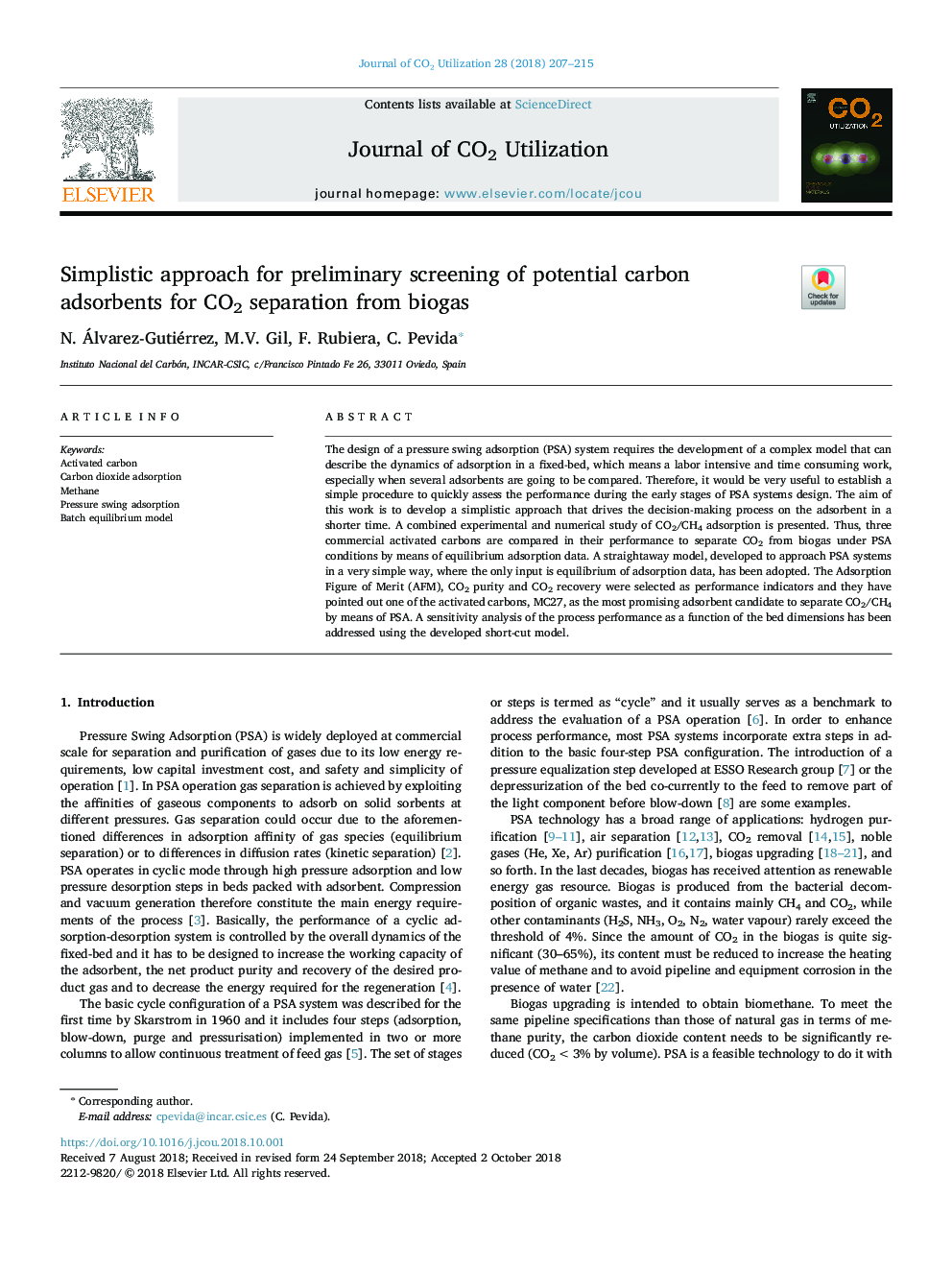| Article ID | Journal | Published Year | Pages | File Type |
|---|---|---|---|---|
| 11024559 | Journal of CO2 Utilization | 2018 | 9 Pages |
Abstract
The design of a pressure swing adsorption (PSA) system requires the development of a complex model that can describe the dynamics of adsorption in a fixed-bed, which means a labor intensive and time consuming work, especially when several adsorbents are going to be compared. Therefore, it would be very useful to establish a simple procedure to quickly assess the performance during the early stages of PSA systems design. The aim of this work is to develop a simplistic approach that drives the decision-making process on the adsorbent in a shorter time. A combined experimental and numerical study of CO2/CH4 adsorption is presented. Thus, three commercial activated carbons are compared in their performance to separate CO2 from biogas under PSA conditions by means of equilibrium adsorption data. A straightaway model, developed to approach PSA systems in a very simple way, where the only input is equilibrium of adsorption data, has been adopted. The Adsorption Figure of Merit (AFM), CO2 purity and CO2 recovery were selected as performance indicators and they have pointed out one of the activated carbons, MC27, as the most promising adsorbent candidate to separate CO2/CH4 by means of PSA. A sensitivity analysis of the process performance as a function of the bed dimensions has been addressed using the developed short-cut model.
Related Topics
Physical Sciences and Engineering
Chemical Engineering
Catalysis
Authors
N. Álvarez-Gutiérrez, M.V. Gil, F. Rubiera, C. Pevida,
